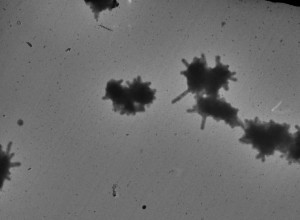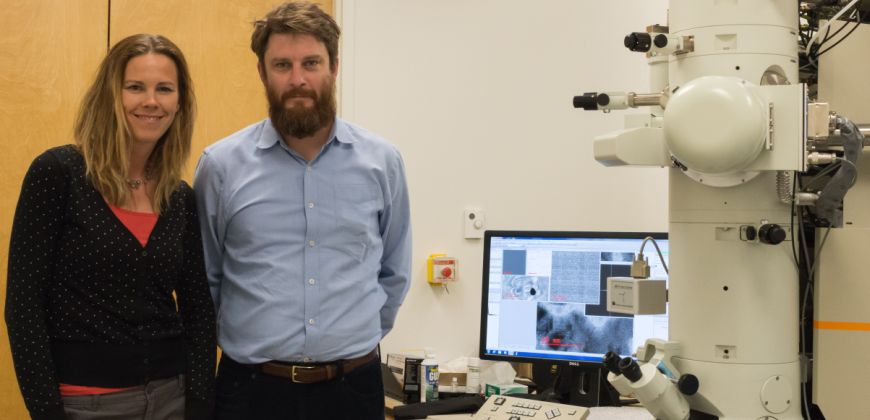
Lifting the lid on microbial ecology’s black box
This feature article on Dr. Ed Hall, a NREL Research Scientist was published on April 27, 2015, by the CSU SOURCE website. The article is re-posted here with permission from the author, Rob Novak. The original article can be found at this link: http://source.colostate.edu/lifting-the-lid-on-microbial-ecologys-black-box/.
Dip a toe into the water of a serene mountain lake and you’re immersed in a complex community of billions of microscopic critters. While these multitudes of unseen life make their livings completely unnoticed, the natural services they provide are critical to the plants and wildlife we can see.
It’s these little things that matter most to Natural Resource Ecology Lab Research Scientist and Microbial Ecologist Ed Hall who is on a mission to figure out what single celled species are up to and how they influence the life and ecosystems around them.
NSF grant
This year Hall received funding from the National Science Foundation’s Integrative Organismal Systems division to explore the physiology and ecology of uncultured bacterial cells, as they exist in their natural state in lakes. Individual microbes living in lakes recycle essential nutrients and provide an organic energy source that forms both the base and an essential link in all aquatic food webs.
Studying microbial organisms often means collecting samples and culturing one cell out of the bunch back in the lab. Unfortunately, these methods have significant limitations.

‘Little is known’
“It’s almost impossible to replicate the natural environment in a laboratory culture, and very few microbes grow easily in a lab,” says Hall. “As a result little is known about their physiology and ecology.”
In the past few years its become more common to utilize DNA sequencing to figure out what is living in a drop of pond water, but that doesn’t tell researchers anything about their behaviors and interactions with one another, both cornerstones of ecosystem science.
A black box
“Right now studying microbial organisms is basically a black box,” says Hall, “You may get a list of different organisms but we know virtually nothing about what they’re made of or how they’re interacting with the ecosystem. I want to take the lid off the box, poke them, and see what they’re up to in their natural environments.”

The newly funded award will allow Hall to advance a new combination of established methods to gain insight into both what is present but also the physiology and interactions of those organisms. “We know microbes matter to ecosystems, but we need to understand how they function as a community, and we can start figuring that out by deconstructing a community’s biomass one cell at a time,” Hall said.
These techniques will identify the molecular content of a single cell, boil down it’s elemental composition and then create a phylogenic profile giving a fuller picture of what role that microbes plays in the broader system. The techniques utilize specialized microscopes, lasers, RNA labels and other specialized equipment being developed on CSU’s campus.
Collaborative effort
Hall is collaborating with Professor Randy Bartels in the Department of Computer and Electrical Engineering who is providing cutting-edge expertise at the frontier of Raman microspectroscopy. Raman is a vibrational spectroscopy that provides information on the molecular composition of matter. When coupled with a microscope (Raman microspectroscopy) individual cells can be visualized and reasearchers can understand the relative composition of molecules in each one.
This shows the molecules composition without it having to grow in the lab first.
Bartels and graduate students in his lab will construct an instrument specifically designed to evaluate signals from single environmental microorganisms attempting to lower the current detection limits for these types of studies.
Pushing the limits
Additionally, Hall is working closely with the Central Instrument Facility and its Associate Director, Karolien Denef, and electron microscopist, Roy Geiss, to push the limits of X-Ray microanalysis using a new ultrahigh resolution transmission electron microscope, a JEOL JEM-2100F TEM.
“In my mind’s eye, there are few things cooler than pushing the limits of our analytical capabilities to delve deeper into the ‘inner space’ of the biology that surrounds us,” said Hall.
